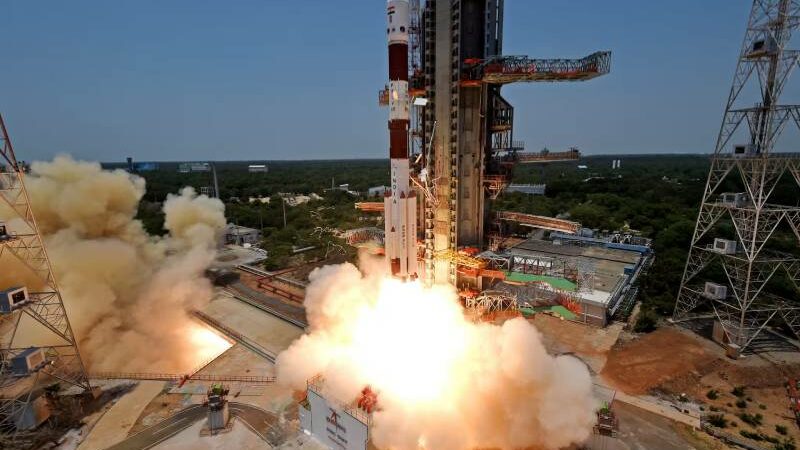Building on a month of historic achievements for the nation’s civil space programmes, India launched its first spacecraft intended for studying the sun.
Aditya-L1 was the name of the spacecraft, which was launched from Sriharikota, an island in the Bay of Bengal, at 11:50 am local time (2:20 am ET) on Saturday. A parking place in orbit about 930,000 miles (1.5 million km) from Earth is where it is currently travelling.
Aditya-L1 was successfully launched less than two weeks after Chandrayaan-3 created history when it was successfully landed on the moon by India’s space agency, the Indian Space Research Organisation. With this achievement, India became the second country in the 21st century and the fourth country overall to successfully land a vehicle on the moon.
Next week is when that mission is supposed to be finished.
Aditya-L1 is currently travelling to Lagrange point 1, which is the region between the sun and Earth where the gravitational attraction of both celestial objects is even out. Aditya-L1 will be able to continue orbiting the sun in that position for an extended period of time while using little fuel.
The position “will provide a greater advantage of observing the solar activities and its effect on space weather in real time,” according to the space agency.
Seven scientific instruments are included in the spacecraft; four of them will be pointed straight towards the sun, and the other three will be used to observe solar wind particles and magnetic fields passing through at Lagrange point 1.
Studying the sun’s upper atmosphere and other solar phenomena, such as coronal mass ejections, or the huge expulsions of plasma from the sun’s outermost layer, are among the mission’s primary goals.
Aditya-L1’s experiments will yield information that will help clarify space weather, which is the word used to describe the magnetic waves that are resonating throughout our solar system. According to the US National Oceanic and Atmospheric Administration, space storms can have an effect on Earth when they enter our atmosphere, occasionally damaging satellites, radio communications, and even electrical grids.
India’s Aditya-L1 will supplement data from other missions studying the sun, such as NASA’s Parker Solar Probe, which will “touch” the sun for the first time in 2021.
India’s first solely focused solar mission enhances its position as a rising space superpower.
- Melon Music Awards 2025: Full Nominees List Led by G-Dragon and Jennie - December 16, 2025
- FCS Final Four 2025: Semifinal Matchups, Start Times and Broadcast Details - December 16, 2025
- National Champions: Washington Huskies Win First-Ever 2025 NCAA DI Men’s Soccer Title - December 16, 2025





